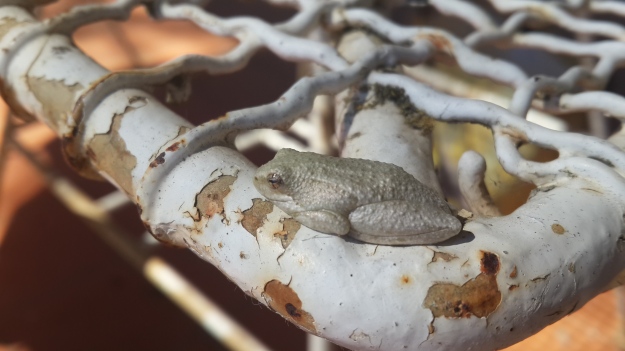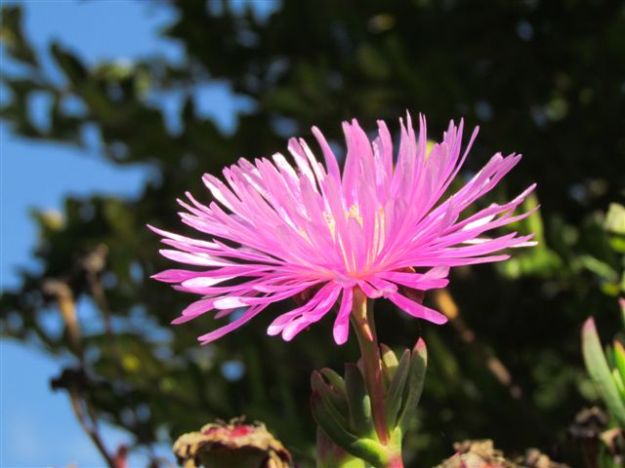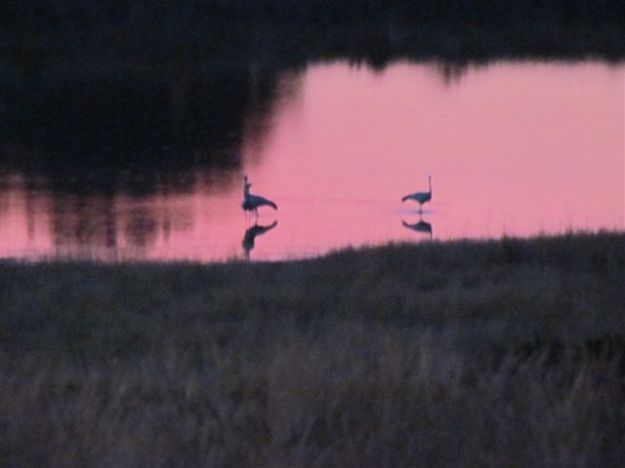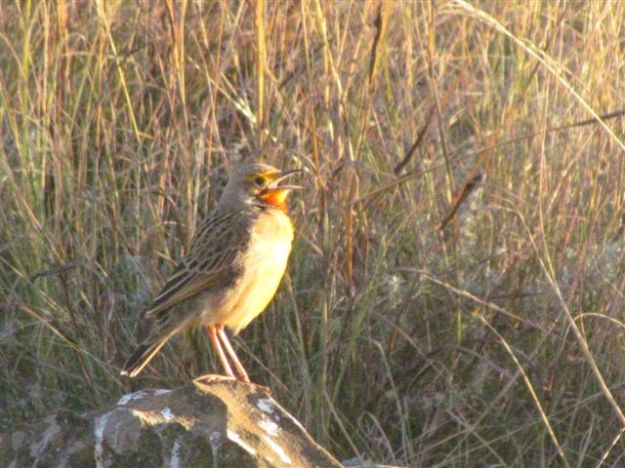At the Dargle Conservancy AGM held recently, contributors to our monthly Wildlife Sightings were honoured. Sue Robinson won “Most interesting sighting” for her Cape Vulture pictures on Ivanhoe; Sandra Merrick of Albury farm was recognised as the “Most enthusiastic and committed contributor” and Dieter Setz won “Best Photo” for his sleeping bat. Everybody enjoyed the video clip compilation of the past year’s Wildlife pictures and videos – click on this link to view it online: http://animoto.com/play/40k5MovekaZT20o47z1Hkg
Brandon Powell – Bukamanzi
Iona Bate and I were having tea on my verandah when we enjoyed a rare sighting of the White Wire Tea Table Frog. It was so tiny and well-camouflaged that it was only after three cups of tea that we noticed it. If there are any keen Herpotologists out there we’d love to know what it is really called. We called it Proust, after that famous white Frog. A week before I had seen another tiny, very beautiful tree frog on my bedroom window.
Thanks to frog lover Charlene Russell for providing some help with id: “Did you see it’s underbelly at all? It’s probably a Painted Reed Frog (believe it or not), the brown version. During the day, and especially as winter approaches they lose their colour and can go almost white…hard to see the patterns, and no feet to reference it by, but that’s my best guess…I like your name best though.” Also remember comment from Megan Loftie-Eaton about exactly this? https://midlandsconservanciesforum.wordpress.com/2014/01/13/dargle-wildlife-sightings-december-2013/
Ian and Sue Robinson – Ivanhoe
The Eland are a few from one of our two herds of about 50 each.
Have no idea what type of lizard this is.
Bald Ibis,
Black Shouldered Kite.
Two Oribi seen up in the hills overlooking the Furth.
Nikki Brighton Old Kilgobbin Farm
At the beginning of the month there was still quite a lot in flower, but that has changed rapidly despite the warm days. This Berkheya multijuga is now just spikey brown stalks.
Leonotis leonaurus is flowering spectacularly and so often in conjunction with bright yellow Senecio and Phymaspermum creating gorgeous pictures.
During winter, the mist-belt forests open up. The canopies let in more light and the understory shrubs are less dense. This means that some trees become more visible or easier to get close to. One such species is the Zanthoxylum capense – impossible to miss now. The Zulu name for the tree is amusing – umlungumabele which means ‘breast of a white woman’. Apparently this refers to the fact that white women settlers wore bras which made their breasts appear more pointed, unlike the local women. The Afrikaans name kleinperdepram means ‘small horse breast’.
Zanthoxylum is a member of the citrus family. The fragrant white flowers are much favoured by insects, the crushed leaves smell of lemon and shiny black seeds are rich in fragrant essential oils and have been used as perfume. Traditionally twigs were used as toothbrushes and decoctions of bark as an antibacterial mouthwash, ground roots or leaves inserted into a tooth cavity for toothache.
Senecio madagascariensis still puts on a show. The small, bright yellow flowers are clustered on branched inflorescences and are easily visible in the grass. Senecio is a largest genus of flowering plants (2000 species worldwide) with over 300 species found in South Africa.
It seeds itself prolifically – lots of fluffy windborne seeds are produced continually. Bees, wasps, flies, butterflies and beetles all love this little shrub, which is common in disturbed ground. As was the case on the edges of the farmland when we did the last track and scat id workshop. Oriah was pretty as a picture in the middle of it all!
Rose and Barry Downard Oak tree cottage
Birds: Saw a Spotted Eagle Owl perched on our property signpost one evening as we returned home. Crested Eagle, Herons, Cardinal Woodpecker, Olive Woodpecker, Hoopoes, Amethyst Sunbirds, Rock Pigeons, Sparrows, Olive Thrush, Robin, Fiscal Shrike. A lone male Redwinged Starling has been sleeping on our veranda every night for the past two to three months, and finally this week he found a mate. We have not seen any other Redwinged Starlings on our property for a couple of months. Genet and Reedbuck seen next to the Dargle Road by the Sinclair’s farm late one evening.
Natal Green Snakes (juvenile and adult). Large adult Red-lipped Herald. Dwarf Chameleon. 4Several tiny tree frogs looking for places to shelter from the cold. A tree frog on our dewy window at sunrise.
Jeanne Tarrant from EWT comments: “I would say that both this frog, and the white one above, are juvenile Painted Reed Frogs – Hyperolius marmoratus. Quite tricky to ID as the colouring is not yet established, but the body shape, and most importantly orientation of the pupil (horizontal) is diagnostic for reed frogs. Natal Tree Frogs don’t occur that far inland, and have vertical pupils.
Many spectacular sunrises and sunsets again this month.
Mike and Anne Weeden – River Run on Hopedale
We have three swallows nests under the thatched eaves and enjoy watching their endeavours during the summer months. This year one of the pairs had very late babies. One fell out of the nest and died. The other one fluttered from the nest onto a nearby beam and got stuck. When we moved in five years ago we had a problem with starlings roosting above our table and pooping all over us. We invested in a sticky product to spread on the beams which would be unpleasant for the birds without being harmful (so we were told). Unfortunately some little birds got covered in goo and died or had to be euthanased. Only mineral turpentine removes the goo which is obviously unsuitable for birds. Mike rescued this baby who had goo on its feet and tail feathers. He spent a couple of days cleaning it and put it in a box under the nest in between. Finally he pronounced it clean and placed it on a table at the top of the steep bank down to the river. I called the frantic parents with the app on my iPad and once they swooped past the baby tried to follow. It would flutter a little way and then land in the long grass. Mike would trudge down the hill, bring it back up and start again. This went on for most of the day with every flight getting longer and faster and by evening the three were flying around together. A day or two later, all the swallows had left for the winter. We like to think that our little “late starter” made the grade!
We also had a baboon in our veggie garden – the first one we have ever seen or heard.
Ashley Crookes – Copperleigh Farm
Sunset panorama I took on my way back to Dargle last weekend.

Pat and Sandra Merrick – Albury Farm
One morning we took our 2 small dogs on a walk through the natural forest next to Lythwood lodge. We left our 2 large dogs at home thank goodness. 5 minutes into the walk the dachshund disappeared off the foot path. We could hear him running around in the undergrowth. 20 minutes later he sped past us, up the path and round the corner, where all hell broke loose. Barking and screeching ensued. Pat told me to get off the path (I did have my camera with me) as animal might come racing down. My thought was, a bush pig or a bush buck, attacking the dog. Pats thought, leopard! It was neither. It was 5 jackal attacking our little dog – they were out hunting at 10am. Pat shouted and screamed to “voetsak” and I joined in vocally although could not see what I was screaming at, but thought more noise the better to chase off whatever it was.
They ran off and left our poor dog with a few bites on his legs and 2 teeth marks on each testicle! Ouch! ( I do have a photo but thought it best not to put it in – some members might be squeamish, or it might have to be edited ha ha) I was just so thankful that our rottie and terrier were not there as it would have been a massacre. They hate jackal who stand yowling outside our gate every night, before the nightly hunt. Fortunately our dachie was not badly injured and all his injuries had healed after 2 weeks. It could have been so much worse.
The Reed Buck seem to be coming down from the hills – quite a few in our garden in the long grass. The dogs flush them out in the evening – they then jump over the fence.
Reedbuck Doe
Quite a few duiker. A caracal ran in front of Pats bakkie just outside our gate last week. Our blue crane still keep coming back to the dam every couple of days, mainly in the evenings.
Grey Crowned Crane
Gurney sugar birds are back and like hiding in the bottle brush trees. They sing all day long – beautiful to hear.
Still lots of sunbirds, although colourless now. African hoopoes still in the wattle plantation. Buff streaked Chats.
Orange Throated Longclaw.
Our baby bulbuls have left. Our barn owls are still in the roof and chimney. I am not sure how many we have at the moment. Saw 2 flying off the roof a couple of nights ago. Saw a gymnogene hopping over the rocks. Still get Spoonbills every now and then.
Spectacular sunsets this past month
Responses to some of last Month’s Dargle Sightings:
Josh Dovey – Regarding Dave Mann’s note on the noises in the forest, it is Baboons, we saw them last week. We are opposite Dave’s place.
Jason Londt – The frog at Copperleigh is actually a toad. The caterpillars seen at Robhaven are those of an emperor moth, and the eggs on the back of one are actually cocoons of a parasitic wasp.
























thanks for lovely photos. Sunsets this last month have been fantastic, you do them full justice!
LikeLike
Beautiful images. Thank you.
LikeLike
Think thats a Drakensberg Crag Lizard seen at Ivanhoe
LikeLike